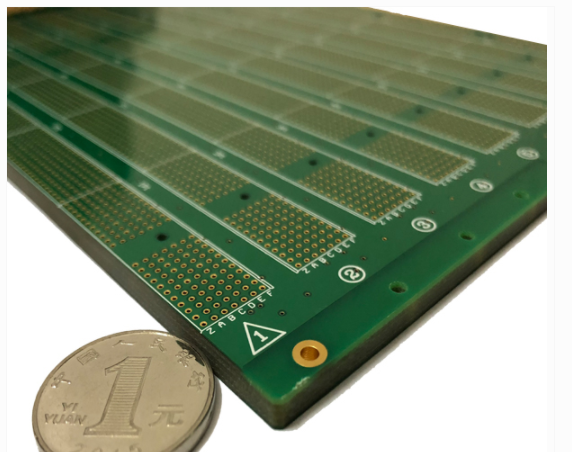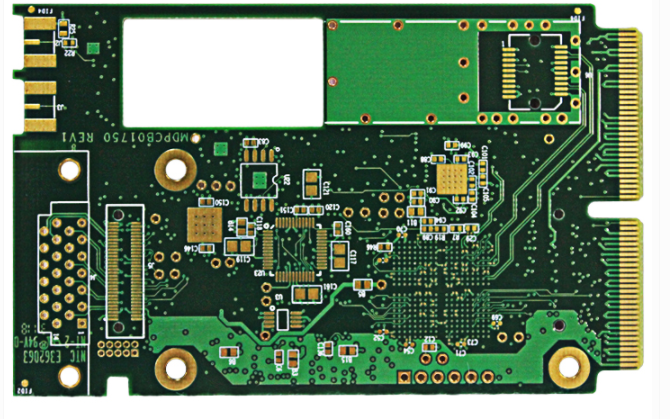Do you know that copper-clad is an important part of PCB circuit board design?
The so-called copper pour is to use the unused space on the PCB as a reference surface and then fill it with solid copper. These copper areas are also called copper filling.
The significance of copper coating is to reduce the impedance of the ground wire and improve the anti-interference ability; reduce the voltage drop and improve the efficiency of the power supply; if it is connected to the ground wire, it can also reduce the loop area.
There are generally two basic methods of copper coating, namely large-area copper coating (solid copper coating) and grid copper. Is it better to use large-area copper coating or grid copper coating? It is not easy to generalize, they have their own advantages and disadvantages.
1. Advantages of solid copper clad: It has the dual functions of increasing current and shielding. Disadvantages: If wave soldering is used, the board may lift up or even blisters. Solution: Generally, several grooves are also opened to relieve the blistering of the copper foil.
2. Advantages of grid copper clad: From the perspective of heat dissipation, the grid has advantages (it reduces the heating surface of the copper) and plays a role in electromagnetic shielding to a certain extent. Disadvantages: The pure copper-clad grid is mainly used for shielding, and the effect of increasing the current is reduced.

The pros and cons of PCB copper
Advantages: Provide additional shielding protection and noise suppression for the inner signal. Improve the heat dissipation capacity of the PCB. In the PCB circuit board production process, the amount of corrosive agent is saved.
Avoid the PCB warping and deformation caused by the different stress caused by the PCB circuit board during reflow soldering due to the unbalanced copper foil.
Disadvantages: The outer copper-clad plane must be separated by the surface components and signal lines. If there is a poorly grounded copper foil (especially the thin and long broken copper), it will become an antenna and generate EMI Problem.
If the pins of electronic components are fully connected with copper, the heat will be lost too quickly, and it will be difficult to desolder and rework. The copper-clad plane of the outer layer must be well grounded, and more vias need to be punched to connect to the main ground plane. If more vias are punched, it will inevitably affect the wiring channels, unless buried blind vias are used.
Precautions for copper coating
When the engineer is pour copper, in order to make the copper pour achieve the expected effect, need to pay attention to the following aspects:
1. For single-point connection of different grounds, the method is to connect through 0 ohm resistors or magnetic beads or inductance.
2. The metal inside the device, such as metal radiators, metal reinforcement strips, etc., must be "good grounding".
3. The island (dead zone) problem, if you think it is too big, it won't cost much to define a ground via and add it in.
4. Do not pour copper in the open area of the middle layer of the multilayer circuit board. Because it is difficult for you to make this copper clad "good ground".
5. Copper pour near the crystal oscillator. The crystal oscillator in the circuit is a high-frequency emission source. The method is to pour copper around the crystal oscillator, and then ground the shell of the crystal oscillator separately.

6. At the beginning of the wiring, the ground wire should be treated the same. When routing the ground wire, the ground wire should be routed well. You cannot rely on adding vias to eliminate the ground pins for the connection after copper plating. This effect is very bad.
7. It is best not to have sharp corners (<=180 degrees) on the circuit board, because from the perspective of electromagnetics, this constitutes a transmitting antenna! For other things, it is only large or small. It is recommended to use the edge line of the arc.
8. If the PCB circuit board has more grounds, such as SGND, AGND, GND, etc., according to the position of the PCB board, the main "ground" is used as a reference to independently pour copper, digital ground and It is not much to say that the copper pour is separated by analogy. At the same time, before the copper pour, first thicken the corresponding power connection: 5.0V, 3.3V, etc., in this way, multiple deformation structures of different shapes are formed.
Summary: If the grounding problem of the copper on the PCB circuit board is dealt with, it is "pros outweigh the disadvantages". It can reduce the return area of the signal line and reduce the electromagnetic interference of the signal to the outside.